 |
 |
 |
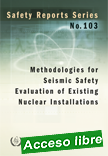 |
Methodologies for Seismic Safety Evaluation of Existing Nuclear Installations
Safety Reports Series No. 103
English ¦ STI/PUB/1893 ¦ ISBN: 978-92-0-107219-1 ¦ 117 pages ¦ Date published: 2020
Experience shows that an assessment of the seismic capacity of an existing operating facility can be required for a number of reasons, for example identification of potential seismic vulnerabilities based on operating experience events or the periodic safety review programme. This publication covers the seismic safety evaluation programmes to be performed on existing nuclear installations in order to ensure that the required fundamental safety functions are available, with particular application to the safe shutdown of reactors.
|
It includes lessons learned based on the IAEA Action Plan for Strengthening Nuclear Safety, following the Fukushima accident, and updated methodologies for seismic safety evaluation of nuclear installations.
|
 |
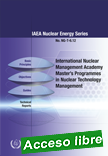 |
International Nuclear Management Academy Master’s Programmes in Nuclear Technology Management
IAEA Nuclear Energy Series No. NG-T-6.12
The IAEA facilitated International Nuclear Management Academy (INMA) supports universities to establish and deliver master’s degree programmes focusing on technology management for the nuclear sector including nuclear power programmes, nuclear applications and radiological technologies. The current publication provides guidance for these master’s programmes that have a specialized focus on the advanced aspects of management and leadership required by the nuclear sector.
|
It describes the requirements for an INMA nuclear technology management programme (NTM) as well as recommendations for their implementation. The process for a university’s NTM programme to be endorsed by the IAEA, including peer review missions, is described in detail with templates for the required information package included. The publication is applicable to universities, stakeholders of nuclear educational programmes and any other nuclear or radiological organization wishing to support the education of their managers and leaders.
|
 |
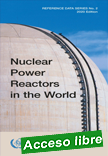 |
Nuclear Power Reactors in the World, 2020 Edition
Reference Data Series No. 2.
This is the 40th edition of Reference Data Series No. 2, which presents the most recent reactor data available to the IAEA. It contains summarized information as of the end of 2019 on power reactors operating, under construction and shut down as well as performance data on reactors operating in the IAEA Member States. The information is collected through designated national correspondents in the Member States and the data are used to maintain the IAEA's Power Reactor Information System (PRIS).
|
-.
|
 |
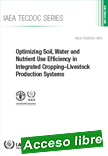 |
Optimizing Soil, Water and Nutrient Use Efficiency in Integrated Cropping–Livestock Production Systems
IAEA TECDOC No. 1924
This publication draws on data and results collated during an IAEA coordinated research project (CRP) on optimizing soil, water and nutrient use efficiency in integrated cropping-livestock production systems. The main objective of the project was to enhance food security, improve soil fertility, and mitigate greenhouse gases from agriculture using integrated cropping-livestock systems in changing climate conditions.
|
. In addition, the CRP participants developed a package of technology for farmers to increase crop production and improve their livelihoods using nuclear and related techniques.
|
 |
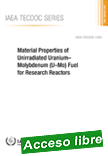 |
Material Properties of Unirradiated Uranium–Molybdenum (U–Mo) Fuel for Research Reactors
IAEA TECDOC No. 1923
This publication presents the material properties of all unirradiated Uranium–Molybdenum (U-Mo) fuel constituents that are essential for fuel designers and reactor operators to evaluate the fuel’s performance and safety for research reactors. Many significant advances in the understanding and development of low enriched uranium U–Mo fuels have been made since 2004, stimulated by the need to understand irradiation behavior and early fuel failures during testing.
|
The publication presents a comprehensive overview of mechanical and physical property data from U-Mo fuel research.
|
 |
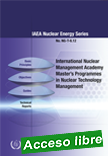 |
International Nuclear Management Academy Master’s Programmes in Nuclear Technology Management
IAEA Nuclear Energy Series NG-T-6.12
The IAEA facilitated International Nuclear Management Academy (INMA) supports universities to establish and deliver master’s degree programmes focusing on technology management for the nuclear sector including nuclear power programmes, nuclear applications and radiological technologies. The current publication provides guidance for these master’s programmes that have a specialized focus on the advanced aspects of management and leadership required by the nuclear sector.
|
It describes the requirements for an INMA nuclear technology management programme (NTM) as well as recommendations for their implementation. The process for a university’s NTM programme to be endorsed by the IAEA, including peer review missions, is described in detail with templates for the required information package included. The publication is applicable to universities, stakeholders of nuclear educational programmes and any other nuclear or radiological organization wishing to support the education of their managers and leaders.
|
 |
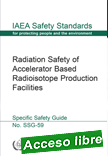 |
Radiation Safety of Accelerator Based Radioisotope Production Facilities
Specific Safety Guide
IAEA Safety Standards Series No. SSG-59
Radioisotopes are used worldwide in a range of medical, industrial, research and academic applications. A large proportion of these radioisotopes are produced in particle accelerators and the number of institutions that operate linear accelerators or cyclotrons and manufacture and distribute radiopharmaceuticals, for example, is significant and increasing.
|
The production of radioisotopes using particle accelerators poses significant radiation hazards to workers, members of the public, and the environment when accelerators are operated without adequate radiation safety measures. This Safety Guide provides practical guidance for implementing radiation protection and safety measures in such facilities involved in the production and use of radioisotopes.
|
 |
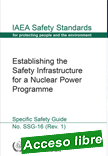 |
Establishing the Safety Infrastructure for a Nuclear Power Programme
Specific Safety Guide IAEA Safety Standards Series No. SSG-16 (Rev. 1)
English | STI/PUB/1901 | ISBN: 978-92-0-108919-9 | 169 pages | Date published 2020
This Safety Guide provides recommendations on the establishment of a framework for safety in accordance with the IAEA safety standards for States deciding on and preparing to embark on a nuclear power programme. In this regard, it proposes 197 safety related actions to be taken in the first three phases of the development of the nuclear power programme, to achieve the foundation for a high level of safety throughout the entire lifetime of the nuclear power plant (NPP).
|
This includes safety in the construction, commissioning, and operation of the NPP and the associated management of radioactive waste and spent fuel, and safety in decommissioning. Thus, it contributes to the building of leadership and management for safety and of an effective safety culture and serves as guidance for self-assessment by all organizations involved in the development of a safety infrastructure.
|
 |
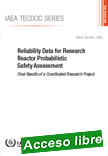 |
Reliability Data for Research Reactor Probabilistic Safety Assessment
IAEA-TECDOC-1922 978-92-0-114320-4 | 236 pages | Date published: 2020 | English
Reporting on the results from an IAEA coordinated research project, this publication provides information on reliability data for research reactors. In addition to component reliability data, the publication provides useful information related to the preparation and application of data relevant to initiating events, human reliability, and common cause failures.
|
It also provides guidance on the use and application of the reliability data for research reactors probabilistic safety assessments as a complementary tool to deterministic methods. This publication should be used in conjunction with the relevant IAEA Safety Standards.
|
 |
 |
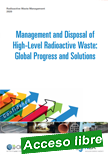 |
Management and Disposal of High-Level Radioactive Waste: Global Progress and Solutions
English, published: 06/29/20
Radioactive waste results from many different activities in health care, industry, research, and power production. All such waste must be managed safely, with the protection of human health and the environment as the highest priority. After decades of research, the international scientific community is now confident that placing high level radioactive waste in deep geological repositories (DGRs) is both safe and effective.
|
The government of each country has the absolute right and responsibility to implement the energy and environmental policies it believes are best. In the case of the disposal of radioactive waste, it is paramount that these debates should be informed by objective facts. This report therefore aims to provide the general reader with the current state of knowledge with regards to the management of high level radioactive waste in DGRs.
|

|
|
|
| |
|
|
| |
| |
|
|
| |
| |
|
|
| |
| |
|
|
|
| |
| |
